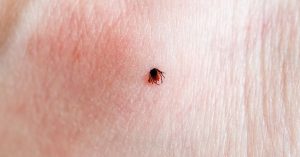Call for your appointment today 914-666-4665 | Mt. Kisco, New York

The cause of POTS is not well understood but researchers believe it is due to multiple factors. According to Wells and colleagues, “moderate autonomic dysfunction, increased sympathetic tone, severe deconditioning, inadequate venous return or excessive blood venous pooling may contribute to POTS symptoms.”
In addition, “Autoimmunity and mast cell activation syndromes have been postulated as contributing to the development of POTS in some patients, but immunotherapy is rarely indicated and the relevance of autoantibodies and mast cells in most patients with POTS remains controversial,” writes Wells.
Concurrent medical conditions
Patients with POTS may have other coexisting conditions. For instance, symptoms related to IBS, food intolerance and allergic sinusitis are often reported in patients with POTS, according to Wells.
In fact, “the treatment of POTS may improve IBS symptoms, as seen in a cohort of children treated with fludrocortisone.” And “concurrent hypermobility, often referred to as Ehlers Danlos Syndrome, is overrepresented in patients with POTS,” writes Wells.
Symptoms of POTS often overlap with those found in patients with chronic fatigue syndrome and fibromyalgia. Wells and colleagues did not discuss POTS and its association with Lyme disease.
POTS and Lyme disease
However, postural tachycardia syndrome has been described in patients treated for Lyme disease. Kanjwal and colleagues feature several cases in their article, “Postural orthostatic tachycardia syndrome following Lyme disease.” [2]
Five patients with Lyme disease and POTS “were ill with fatigue, cognitive dysfunction, orthostatic palpitations, and either near syncope or frank syncope,” the authors write.
“Three patients were also suffering from migraines, two from anxiety and depression and one from hypertension,” they point out.
Moreover, the five individuals had difficulty functioning.
“The debilitating nature of these symptoms had resulted in a loss of employment or inability to attend school.”
POTS treatment
Unfortunately, there are few treatment options for POTS. “Available therapies for this condition are limited and directed toward symptom control by either increasing intravascular volume, increasing peripheral vascular tone or controlling HR,” writes Wells.
“Fludrocortisone is a reasonable option for increasing the intravascular volume, while midodrine is useful in those with peripheral pooling,” Wells explains. And “nonselective β2 antagonists such as low-dose propranolol may be effective for treating the elevated [heart rate] HR.”
Editor’s note: I have found that treating Lyme disease and co-infections can be effective at alleviating POTS symptoms.
Related Articles:
Growing list of cardiac problems in Lyme disease
Lyme disease induces severe cardiac problems in 15-year-old boy
Lyme carditis presenting as atrial fibrillation treated successfully
References:
- Wells, R., et al. (2018). “Postural tachycardia syndrome: current perspectives.” Vasc Health Risk Manag 14: 1-11.
- Kanjwal, K., et al. (2011). “Postural orthostatic tachycardia syndrome following Lyme disease.” Cardiol J 18(1): 63-66.




I am recently diagnosed with Idiopathic Pulmonary Fibrosis. Any knowledge of cause of lung tissue Fibrosis associated with tick infection?
I am not aware of any studies that looked at that question.
I was diagnosed with Idiopathic Pulmonary Fibrosis (IPF) four years ago. For over two years, I relied on prescribed medications and treatments, but unfortunately, my condition continued to worsen. My breathing became more difficult, fatigue increased, and even simple activities started to leave me exhausted.Last year, out of desperation and hope, I decided to try a herbal treatment program from NaturePath Herbal Clinic. Honestly, I was skeptical at first, but within a few months of starting the treatment, I began to notice real changes. My breathing improved, my energy levels increased, and I was able to do more without feeling constantly short of breath.It’s been a life-changing experience I feel more like myself again, better than I’ve felt in years. If you or a loved one is struggling with IPF, I truly recommend looking into their natural approach. You can visit their website at http://www.naturepathherbalclinic.com